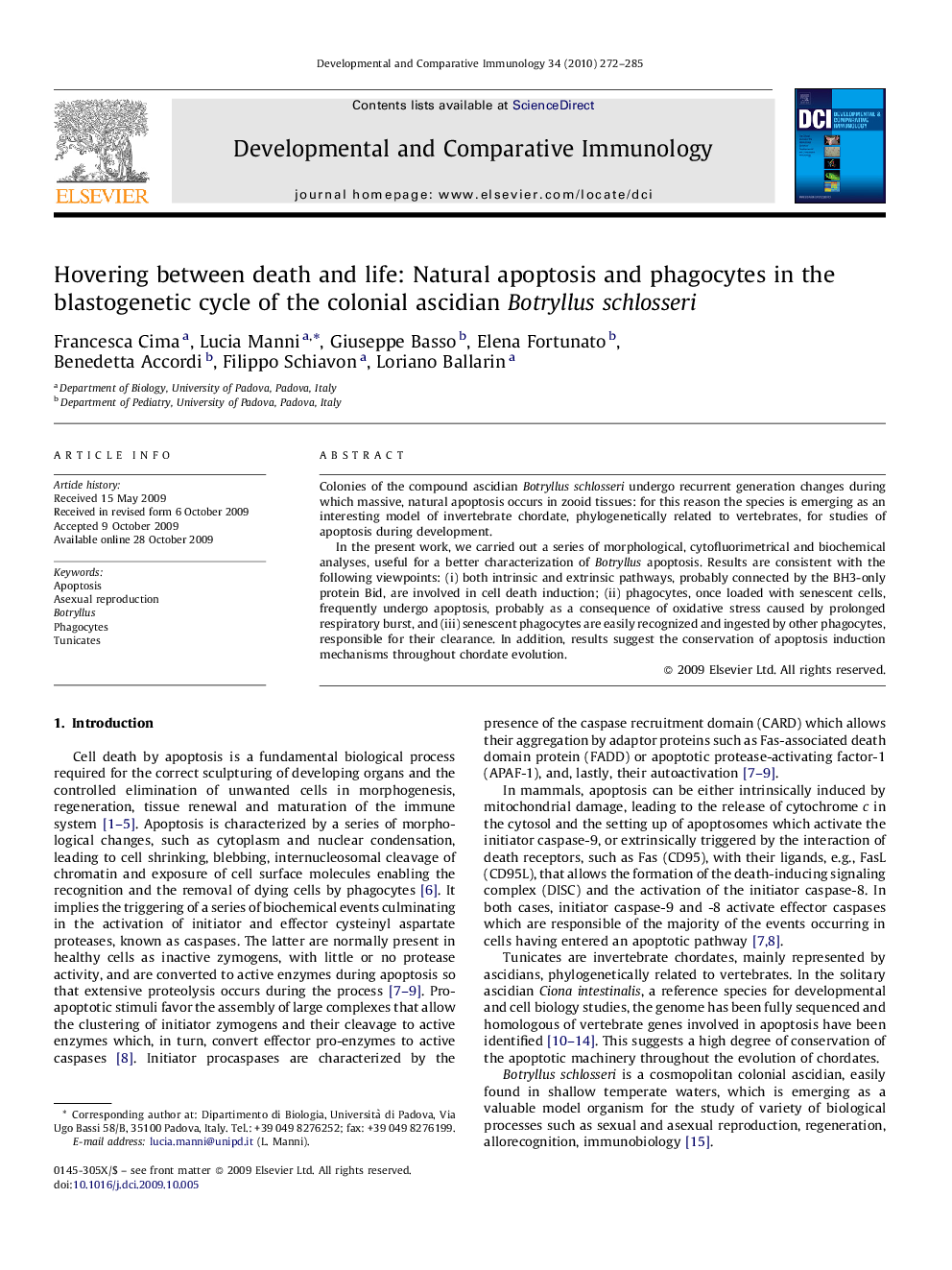| کد مقاله | کد نشریه | سال انتشار | مقاله انگلیسی | نسخه تمام متن |
|---|---|---|---|---|
| 2429913 | 1106529 | 2010 | 14 صفحه PDF | دانلود رایگان |

Colonies of the compound ascidian Botryllus schlosseri undergo recurrent generation changes during which massive, natural apoptosis occurs in zooid tissues: for this reason the species is emerging as an interesting model of invertebrate chordate, phylogenetically related to vertebrates, for studies of apoptosis during development.In the present work, we carried out a series of morphological, cytofluorimetrical and biochemical analyses, useful for a better characterization of Botryllus apoptosis. Results are consistent with the following viewpoints: (i) both intrinsic and extrinsic pathways, probably connected by the BH3-only protein Bid, are involved in cell death induction; (ii) phagocytes, once loaded with senescent cells, frequently undergo apoptosis, probably as a consequence of oxidative stress caused by prolonged respiratory burst, and (iii) senescent phagocytes are easily recognized and ingested by other phagocytes, responsible for their clearance. In addition, results suggest the conservation of apoptosis induction mechanisms throughout chordate evolution.
Journal: Developmental & Comparative Immunology - Volume 34, Issue 3, March 2010, Pages 272–285